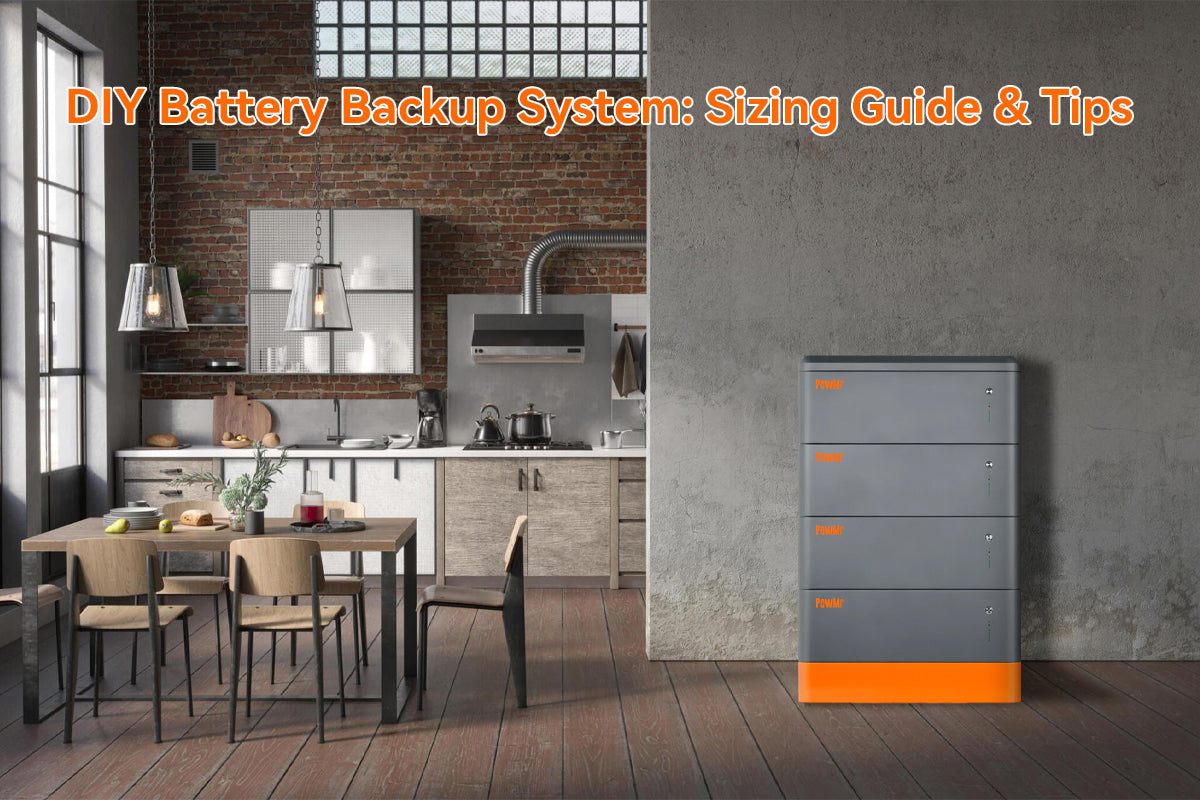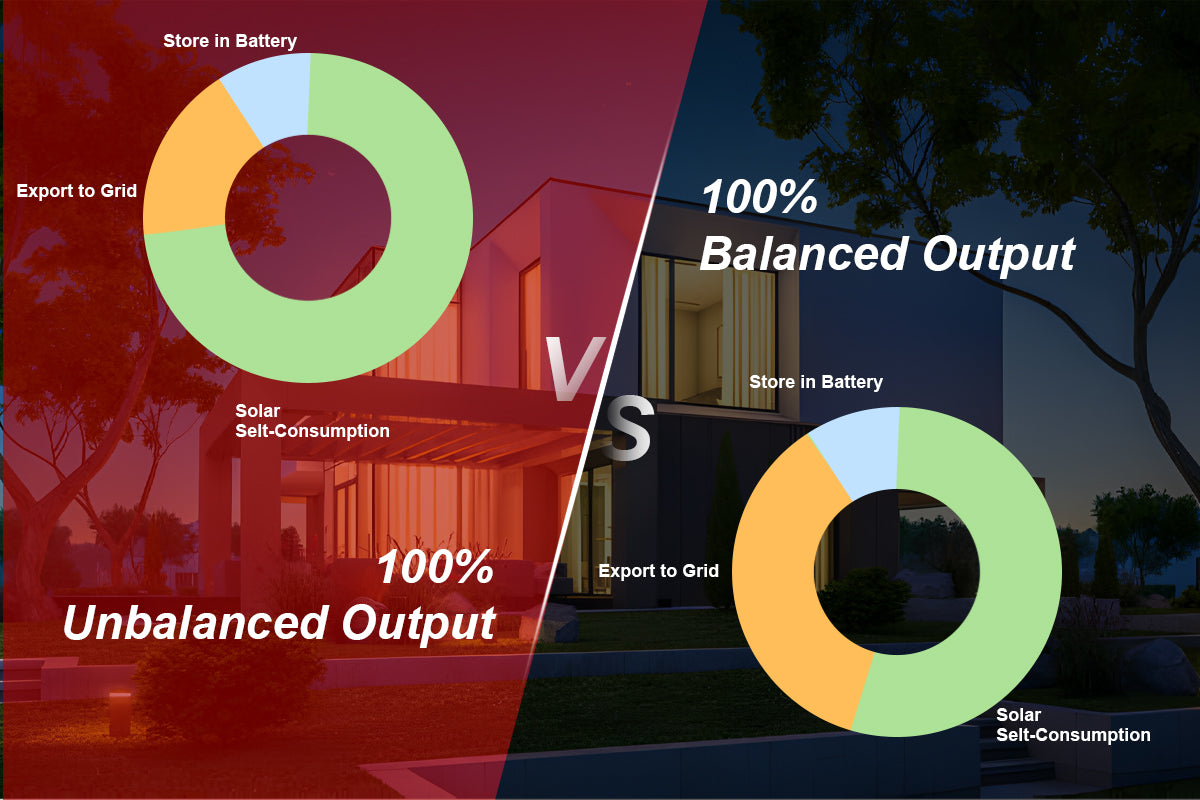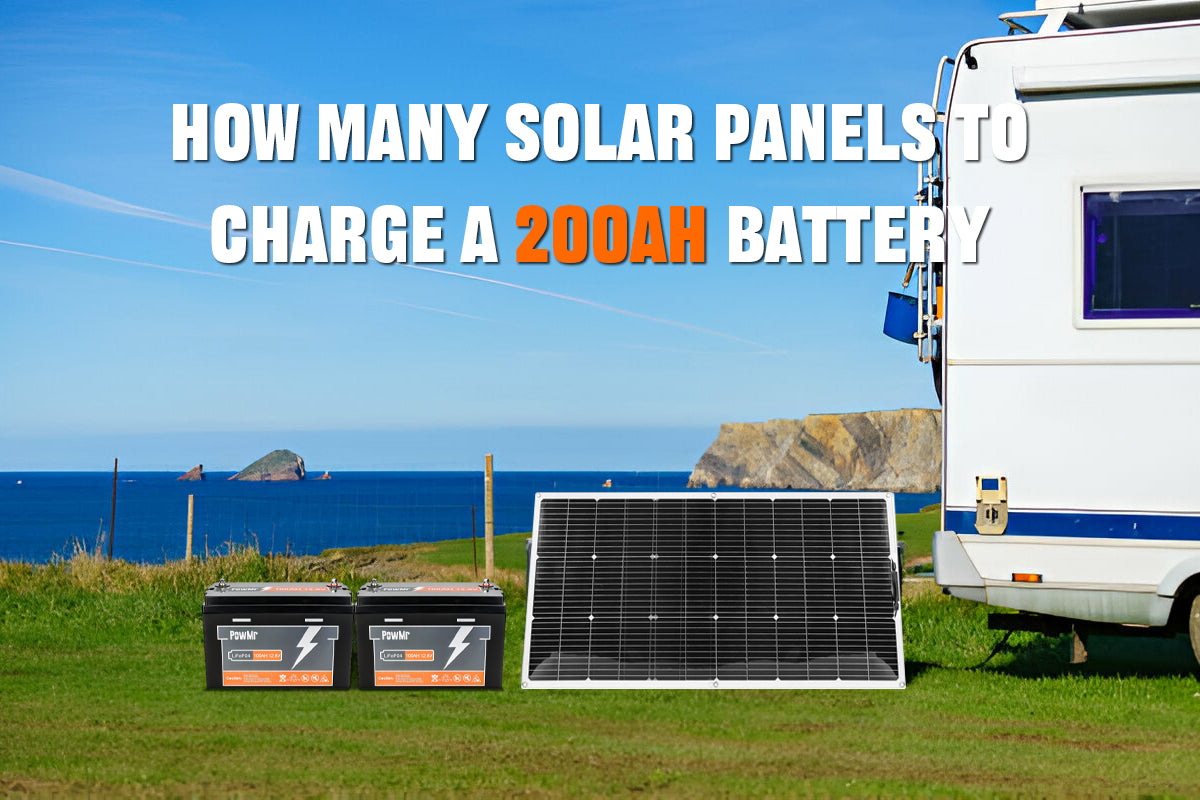In a world where power outages can disrupt daily life, having a reliable backup system for your home is essential. Traditional fossil fuel generators may provide temporary relief, but they come with drawbacks like noise pollution, emissions, and ongoing fuel costs. Fortunately, there's a greener, more sustainable solution: a DIY battery backup system.
This blog delves into the intricacies of constructing your own home battery backup system. From selecting suitable components to offering advice on avoiding errors and enhancing system value, we'll guide you through every step. Join us as we explore how to establish a robust and environmentally friendly power solution, ensuring the safety and comfort of your family during blackouts.
To construct a battery backup system, you'll need essential components like a battery, inverter, battery charger, wiring cables, and compatible home appliances. The selection of each component, its type, and size depends on your specific requirements and the specifications of the appliances you intend to power.
Below, we will provide an overview of the overall approach to designing a home battery backup system and the key considerations involved.
Step1 - Determine your power consumption
Before delving into the specifics of each component, it's imperative to assess your power consumption accurately.
Consideration1 - Estimate Duration
Consider the typical duration of power outages in your region to ascertain how long your battery backup should sustain your household.
Cosideration2 - Assess Home Coverage
Determine whether you want a whole home battery backup system or intend to power specific critical loads during an emergency. If the power outage is brief, you may only need to calculate the essential devices requiring uninterrupted power supply.
However, for longer outages or when there are multiple devices to power, the required battery capacity and inverter power will need to be greater.
Consideration3 - List Appliance Power Ratings
So, make a comprehensive list of the starting power and rated power of the appliances you wish to power during outages.
Rated power is the continuous energy consumption of appliances under standard conditions, essential for assessing overall power requirements.
Starting/surge power reflects the initial energy surge appliances require to start, crucial to prevent overloading, especially with inductive loads like motors.
Both metrics are pivotal in sizing a battery backup system effectively for seamless power continuity. Here's a breakdown of rated (running) watts and starting watts for common household appliances during power outages.
| Appliance | Rated (Running) Watts | Starting Watts |
|---|---|---|
| Refrigerator/Freezer | 700 | 2200 |
| Dishwasher | 1300 | 1800 |
| Washing Machine | 1200 | 2300 |
| Light Bulb | 60-75 | 0 |
| Microwave | 600-1000 | 0 |
| Laptop | 50-300 | 0 |
| Fan | 200 | 350 |
After listing all the rated power of the appliances, simply add them up and multiply by the desired battery backup time, as shown in the formula below.
Total Backup Energy Requirement = (Sum of Rated Powers) × Backup Time
This will give you the total energy required to maintain uninterrupted power supply to all the listed appliances during a power outage.
Step2 - Choose a battery
After the total backup energy consumption calculation, you can figure out how big of a battery backup do you need for your house.
Consideration1 - Battery Voltage and Capacity
Battery voltage and capacity are crucial considerations for backup system selection. Capacity, measured in Ah, indicates the amount of energy the battery can store.
Voltage options like 12V, 24V, 36V, and 48V cater to diverse needs and system compatibility. Higher voltages enhance transmission efficiency but might necessitate supplementary components like converters or inverters.
To measure the size of the battery backup system in kwh, you need to convert Ah to kilowatt-hours (kWh) according to the formula below:
kWh = Battery Capacity(Ah) × Battery Voltage(V) / 1000
Consideration2 - Depth of discharge
For optimal performance, it's advisable to use a larger battery size to prevent the battery backup system from discharging below its recommended depth of discharge (DoD). Deeper discharges can notably shorten the lifespan of the battery.
When factoring in the depth of discharge, adjust the formula for determining the size of the battery backup system as follows:
kWh = (Battery Capacity (Ah) × Battery Voltage (V)) / (Depth of Discharge (%) × 1000)
Consideration3 - Scalability
Consider whether you might need to expand your battery system in the future. Scalable systems, achieved through parallel connection of batteries, offer flexibility, accommodating future growth or alterations in power requirements without requiring a complete overhaul of the infrastructure.
Consideration4 - Compatibility
Ensure that the selected battery is compatible with your inverter, charge controller and other system components by matching its chemistry types, voltage and charging current requirements. This prevents compatibility issues and optimizes performance, ensuring efficient energy transfer.
Consideration5 - Battery Safety
Battery safety is vital to prevent hazards like overcharging and short circuits. Ensure effective communication between the battery management system (BMS) and the inverter. Implement safety protocols and monitoring systems to detect and mitigate risks, enhancing system reliability and safety.
Here we take PowMr's POW-LIO51400-16S stackable battery as an example. With a modular design, the battery has a capacity of 20kWh, expandable to 80kWh, a lifecycle of 6000 cycles, and 80% depth of discharge. It comes with a built-in BMS and is compatible with most inverters on the market, making it ideal for home battery backup. Assuming your home backup energy requirement is 5kWh, the battery can sustain for 4 hours.

Step3 - Select an inverter/inverter charger
Selecting the appropriate inverter or inverter charger is crucial for ensuring uninterrupted power supply to your household appliances, especially during times of grid outages or when utilizing renewable energy sources like solar power. Here are four key considerations to keep in mind:
Related Blog:
How to choose the best inverter for your solar system
Complete solar charge controller choosing guide - type & size
Consideration1 - Power Rating
Begin by calculating your household's total energy consumption to determine the rated power of the inverter needed. It's essential to ensure that the combined power draw of all appliances does not surpass the rated power of the chosen inverter. This prevents overload situations and ensures efficient operation.
Consideration2 - Voltage Compatibility
Apart from the type of battery chemistry, it's important to verify the AC output voltage options (220v/110v) and the compatibility of DC input voltage (12v/24v/36v/48v) for the inverter. For setups that incorporate solar power with battery backup, it's advisable to choose an inverter charger that includes an MPPT solar charge controller and integrated AC charger. This streamlines the system and improves its efficiency.
Consideration3 - Surge Capacity
Factor in the surge capacity of the inverter, especially if you have inductive loads like refrigerators. Ensure that the starting power requirement of such appliances does not exceed the surge capacity of the inverter.
If your appliances demand high surge power, consider investing in inverters tailored for heavy-duty loads, such as the PowMr low-frequency inverter, which offers surge capacities 3 times its rated power, ensuring ample support for startup surges.
Mistake to avoid when building a battery backup system
Mistake1 - Choosing the wrong battery chemistry
When selecting batteries for your DIY backup system, it's crucial to consider the battery chemistry and compatibility with the charger. Different battery chemistries such as lithium-ion, lead-acid, and nickel-cadmium offer varying performance and longevity.
It's important to note that while more advanced battery chemistries offer greater efficiency, they often come at a higher cost. Despite the initial investment, considering long-term benefits is crucial. For instance, while lead acid batteries may need frequent replacement, LiFePO4 batteries can last up to a decade.
Mistake2 - Neglecting Proper Wiring Cable Size and Installation Steps
Selecting the wrong wiring cable size or incorrect wiring sequences can compromise system efficiency and safety. Refer to the product manuals for recommended cable sizes and follow proper installation procedures outlined by manufacturers. Ensure correct connection sequences between components to avoid issues like voltage drops or overheating.
Are home battery backups worth it - Improvement Tips
Tip1 - Integrate solar energy
Enhance the sustainability and cost-effectiveness of your battery backup system by integrating solar panels. Solar power system can supplement grid power, reducing reliance on the grid and lowering electricity bill.
Tip2 - Align with the Electricity Tariff
Maximize savings and efficiency by aligning your battery usage with electricity tariff structures, such as time-of-use tariffs. These tariffs offer varying rates based on the time of day, incentivizing off-peak usage and battery storage during low-demand periods. By strategically charging your battery during off-peak hours and discharging during peak times, you can minimize electricity costs and optimize your system's financial benefits.
Related Articles:
Reduce electricity bill by combining solar energy and TOU rates
Conclusion
In conclusion, a home battery backup system offers a reliable and eco-friendly solution for mitigating the impact of power outages.
We highly recommend the PowMr 10kW inverter with a 20kWh battery backup solution for its cost-effectiveness over pre-made options like solar generators.

The modular designed the 20kWh LiFePO4 battery in the system combines scalability and aesthetics. Paired with a 10kW solar inverter, the UPS ensures seamless transitions with its rapid 10ms switching time during power outages. Additionally, it supports intelligent control of battery charging times, optimizing energy usage based on local electricity tariffs.
Overall, this solution ensures reliability, affordability, and adaptability for your home backup power needs.



